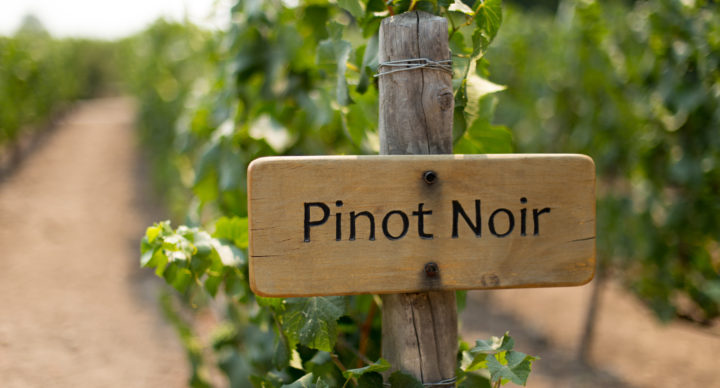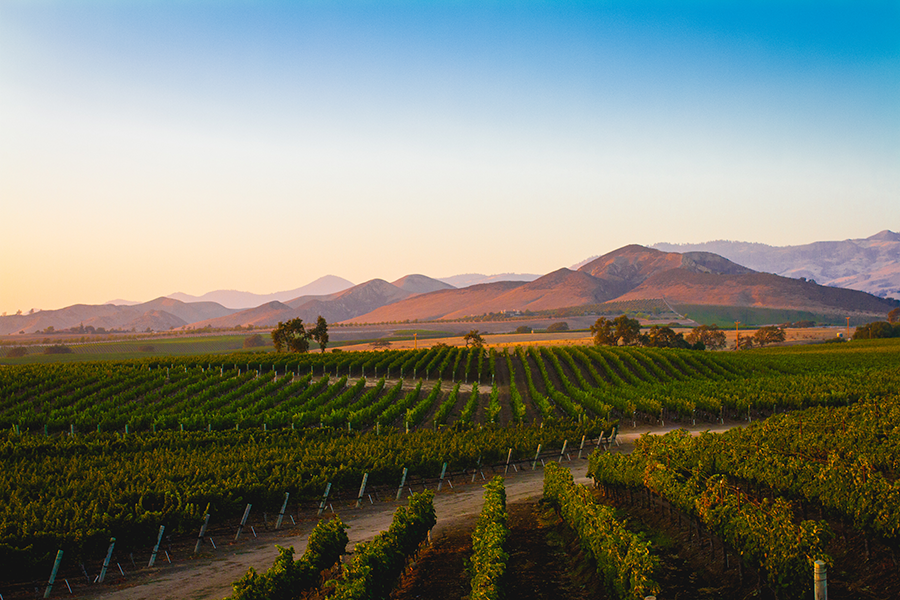Passion Project – Making Great Pinot Noir Without Going Sideways
To certain wine lovers, the thought of planting vineyards and producing wine along California’s Central Coast is hardly an extravagant idea, and it may account for the fact that wineries in these parts seldom change hands.
So, what’s it take to get in on the fun?
To keep costs down, most people start making wine in leased space or in space shared with another winery and using grapes purchased locally. Others plant vineyards on leased land. Of course, a number of folks go all in and develop premium wineries from scratch.
Here’s the basic math for making wine, courtesy of Tom Davidson, a Lee & Associates principal agent who has brokered commercial property and farmland – including 50 trades of wine-related properties – in Santa Barbara County since 1994. He’s also on the board of the Santa Rita Hills Wine Alliance.
If someone wants to raise Pinot Noir grapes, for example, Davidson says, the gently rolling farmland in a valley north of the Santa Ynez coastal mountains is perfect.
The Santa Ynez Valley north of Santa Barbara is unique because the Santa Ynez Mountains are the only east-west range in the continental United States. Combined with the Santa Rita Hills to the north, it forms a roughly 30-mile long valley where the Santa Ynez River empties into the cold waters of the Pacific Ocean.
In the normal daily cycle, the sun heats the land, hot air rises and is replaced by cool air from the Pacific that funnels up the valley. As a result, there is a ½- to 1- degree temperature difference per mile from west to east. If it’s 95 degrees in Santa Ynez, it’s likely 70 degrees in Lompoc.
As a result, the eastern end of the valley supports Bordeaux and Rhone grapes but the western, “cool climate” area known as the Santa Rita Hills, a recognized American Viticultural Area and one of the few places in the world where Pinot Noir thrives. Consequently, world-class wine is being produced in the Santa Rita Hills, which also was the location for the 2004 Oscar-winning film “Sideways.”
Prices for California land that’s suitable for the Pinot Noir grape have been rising and are highest in Northern California districts around Sonoma and the Russian River. Prices there are ranging from $70,000 to $100,000 an acre, Davidson says, adding that land is being sold in Santa Rita Hills region in the $35,000- to $40,000-per acre range. “I have a client with 320 acres of prime vineyard land which has been appraised at $37,500 per acre for plantable vineyard land and $45,000 per acre for berry ground,” he said.
Then add the expense to prepare the soil and plant a vineyard, which costs $30,000 to $50,000 per acre, and annual farming costs of $5,000 to $8,000 per acre. It typically takes three to four years from planting for a vineyard to start producing usable fruit. A good Pinot Noir vineyard will yield 3 tons of grapes per acre which can produce about 180 cases of wine. Assuming a retail value of $40 per bottle this would result in $86,400 per acre in revenue. Of course, don’t forget costs for production, storage, sales and distribution.
By Davidson’s reckoning, it is a very capital intensive venture to buy land and build a vineyard and production space to make 2,500 cases of wine, which represents a good harvest from about 14 acres. The more cost effective approach, which for many is a first step, is to lease space and produce wine from grapes purchased from local growers.
Davidson said he is representing a client who is wading into the business in stages. After making wine in leased space for the last three years his client is considering buying land in the Santa Rita Hills where he would plant a Pinot Noir vineyard.
Davidson said his client takes the view that, if he buys the land and takes it through entitlements, plants vineyards, builds a production facility and down road wants out, he’ll have something that’s saleable. By going through the arduous permitting and development process, he will have created value. A vineyard and winery producing quality Pinot Noir would be an attractive property. “I could not show you such a property today in the Santa Rita Hills area.”
Not everyone plays it so cautiously. Davidson tells of representing a client who bought 100 acres, planted a vineyard and, against all advice, spent heavily to build the county’s first LEED-rated production facility and tasting room.
Since so many people were curious – keen to see the architecturally stunning winery – that tastings are by-appointment only. Because of this, Davidson said, he sells more wine per visitor than average because of the perceived exclusivity of it. “When you tell people that not everyone gets in, they want it more.”
“It’s worked out well for him,” Davidson said. “He’s another case of a wealthy guy who likes wine and who is looking for places to put his money.”
__
By Lee & Associates Staff Writer

